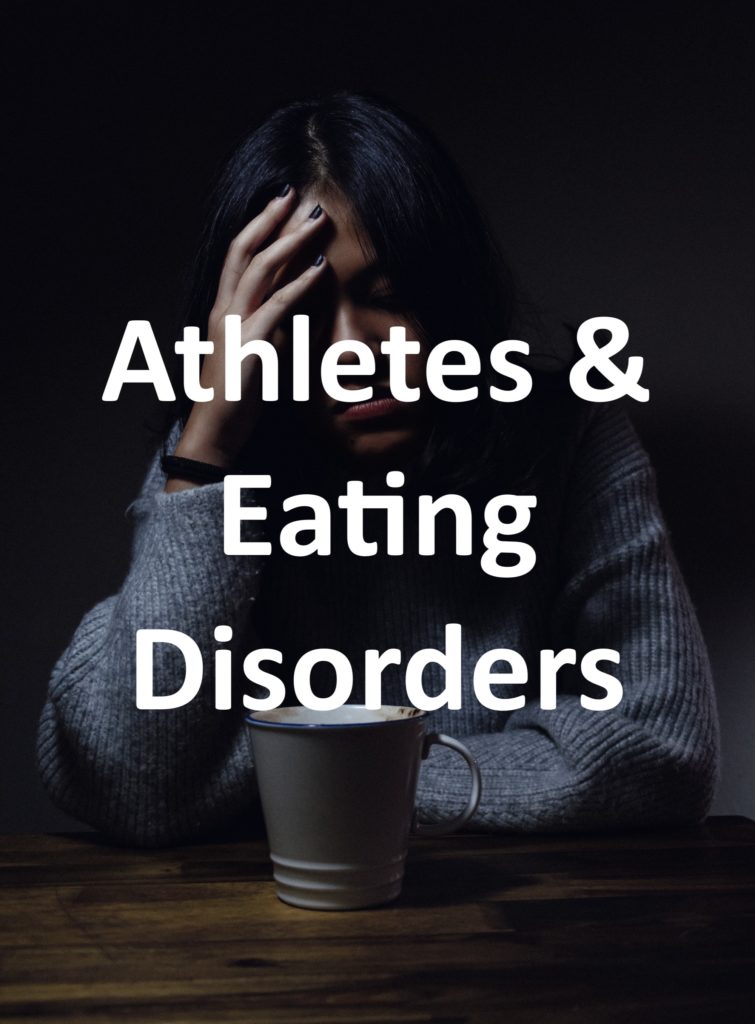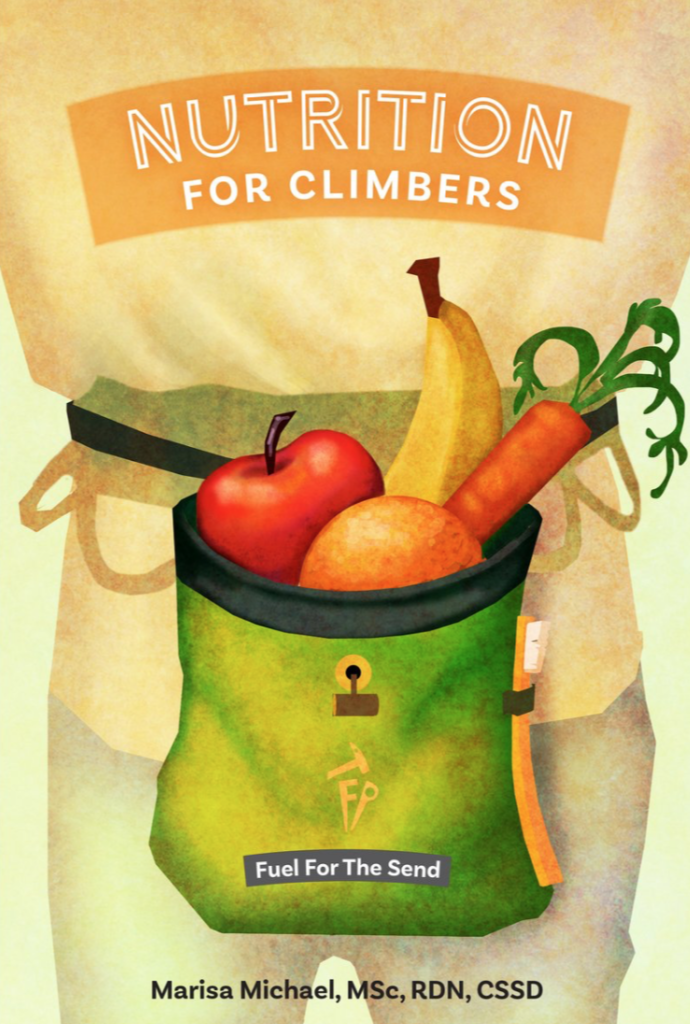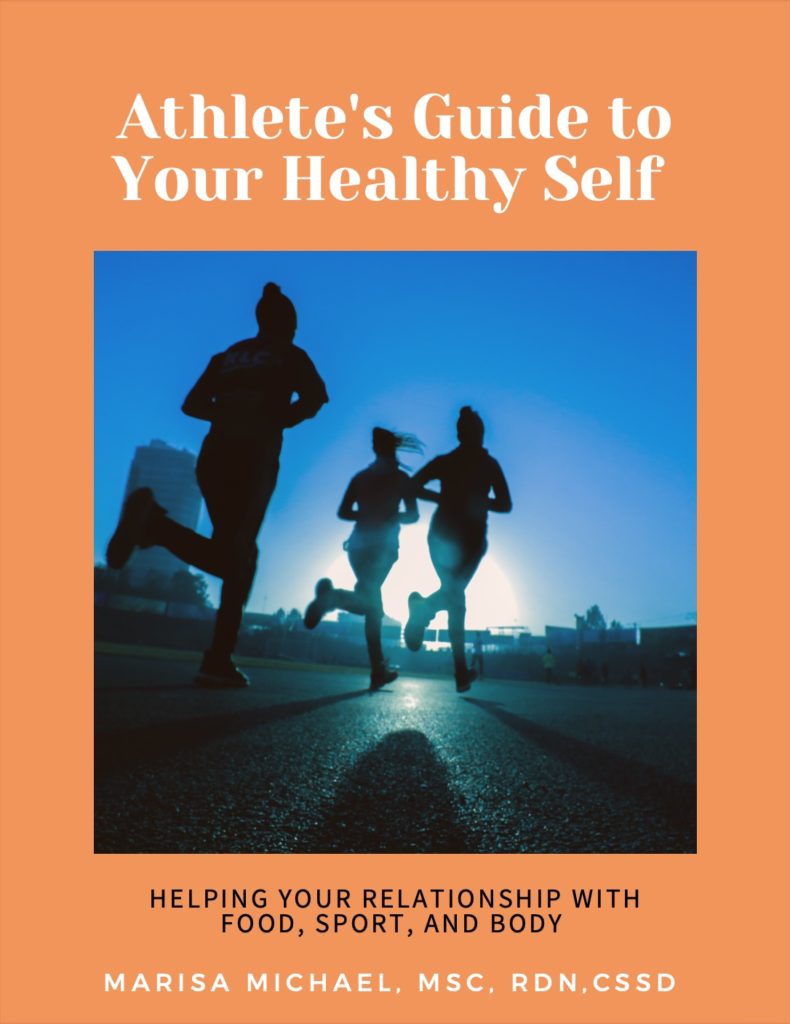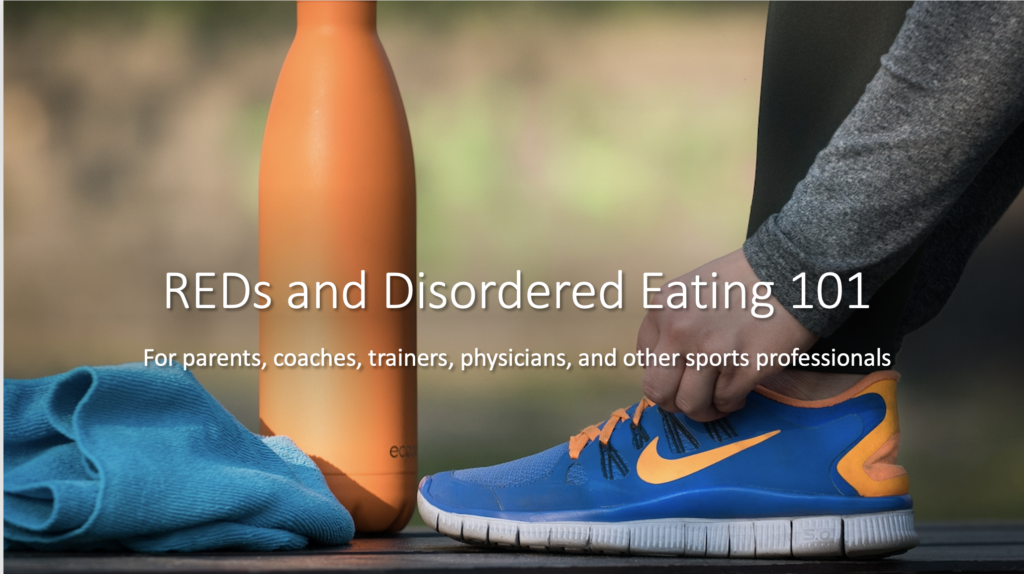
There’s a fine line between eating for sports performance and an eating disorder. Athletes need to consume enough energy to cover energy demands for their sport, daily living, and building and repairing their body tissues, as well as overall health.
Eating disorders (EDs) are defined by ‘’negative beliefs and behaviors concerning eating,
body shape and weight, resulting in restricted and/or binge eating and compensatory
behaviors.’’ EDs arise from a range of complex interplaying genetic, social and
environmental factors. They can cause devastating effects on quality of life and cause social isolation, negatively impacting a person’s entire life.
Athletes often experience feelings of shame, self-judgement and lack of self-compassion. This in turn increases risk of negative mental health issues, such as depression, anxiety and obsessive compulsive disorder (OCD). Athletes also often have a drive for perfection and achievement, which can translate into an eating disorder as they strive for a “perfect” diet.
British jockeys have to make the required riding weight on a daily basis
(50.8kg for flat jockeys and 63.5kg for jump jockeys). There is no off-season in horse racing so jockeys need to ‘make weight’ all year round. Unfortunately, this mostly leads to unhealthy rapid weight loss techniques and practices involving dehydration and food deprivation. Both being extremely harmful to physical and mental health.
Similarly, climbers sometimes try to lose weight and keep it off in order to improve their strength-to-weight ratio, or weight cycle to train “heavy” and climb “light.” This can wreak havoc on your health.
Some consequences of inadequate energy intake (meaning, you are eating too few calories to match your body’s needs):
Exercise-induced menstrual dysfunction (female athletes) — Irregular periods (oligomenorrhea). A clear sign that the body does not have enough fuel for both exercise and reproductive function. It may take up to one year for normal reproductive function to return once energy balance issues are corrected. You can only recover if you eat enough.
Weight loss — This is a clear sign of inadequate energy intake. Weight loss should be planned during the training schedule when exercise demands are lower, not during competitive season. The focus should be on loss of fat while preserving lean tissue. Be careful with this–you may not need to lose fat or weight in order to be a better climber.
Poor growth — Children and adolescents may not grow according to predicted growth patterns if they are not eating enough to fuel exercise and growth. They are also at risk for not building up enough bone density to have a strong skeleton in their adult years.
Presentation of injuries — Repeated injuries which heal slowly is a clear sign of overtraining and under fueling.
Fatigue/Irritability — Difficulties concentrating, shakiness and light-headedness. This is a sign of not eating enough and is easily corrected with increased food intake.
If you feel like you or someone you know may be suffering from low energy availability or an eating disorder, seek help from your healthcare provider and a qualified registered dietitian.
For more information, check out our eating disorder resources page.
This article was written by Heather Frost (edited by Marisa Michael). Contact Heather below at:
- Facebook: @NextStageNutritionltd
- Instagram: @nextstagenutrition
- Twitter: @NXTSTGNUTRITION
- Email: nextstagenutrition@gmail.com
References
https://www.ncbi.nlm.nih.gov/pmc/articles/PMC5550520/
https://www.rcog.org.uk/en/about-us/nga/new-nice-guidance-on-eating-disorders-published/

Learn more about nutrition in the book Nutrition for Climbers: Fuel for the Send.


Check out our on-demand masterclass on REDs and Disordered Eating
~This is general information only and not medical advice. Always seek help from your healthcare provider before undergoing any diet or lifestyle change.
